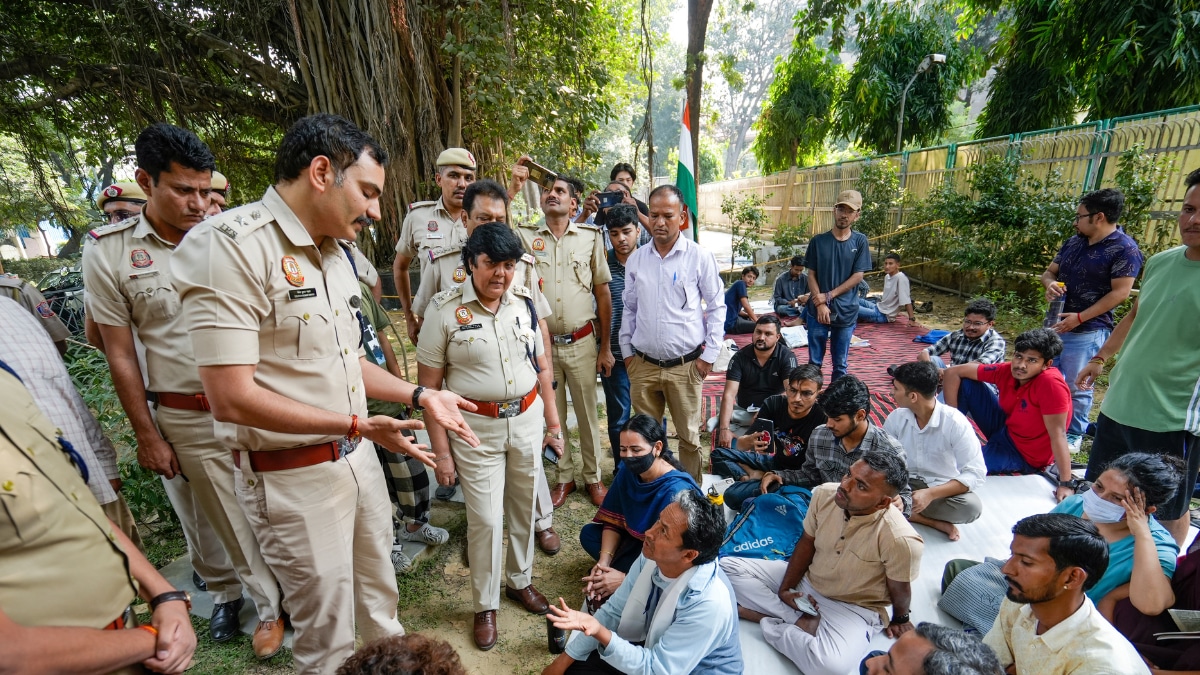Sonam Wangchuk, a renowned climate activist, has been spearheading an indefinite hunger strike outside Ladakh Bhawan in Delhi since October 6th, demanding the inclusion of Ladakh in the Sixth Schedule of the Constitution. This campaign has gained significant attention, highlighting the grievances of the Ladakh region and raising questions about the limitations of peaceful protest in India.
Sonam Wangchuk’s Hunger Strike and the Demand for Sixth Schedule Inclusion
Sonam Wangchuk’s hunger strike is a powerful demonstration of the Ladakhi people’s desire for greater autonomy and protection. Their primary demand revolves around the inclusion of Ladakh in the Sixth Schedule of the Constitution, a provision designed to safeguard the rights of tribal communities and promote their socio-economic development. The Sixth Schedule grants administrative, legislative, and financial powers to autonomous district councils, allowing for greater self-governance and safeguarding tribal cultural identity.
Ladakh, a high-altitude region in the Himalayas, possesses a distinct cultural identity and unique ecological challenges. Including Ladakh in the Sixth Schedule could offer the region greater control over its natural resources, ensure equitable development, and preserve its cultural heritage.
Why is the Sixth Schedule Significant?
The Sixth Schedule of the Constitution provides a framework for the administration of tribal areas in Northeast India, aiming to ensure the preservation of their unique identity and cultural practices. Its key features include:
- Establishment of Autonomous District Councils: These councils are empowered with legislative, judicial, and executive powers to govern the tribal areas.
- Protection of Tribal Rights: The Sixth Schedule safeguards the cultural practices, customary laws, and traditional institutions of tribal communities.
- Development and Self-Governance: The provision aims to promote the socio-economic development of tribal areas and empower communities to manage their resources and affairs.
The inclusion of Ladakh in the Sixth Schedule could provide similar safeguards for the Ladakhi people and address their concerns regarding economic disparities, environmental vulnerabilities, and cultural preservation.
Restrictions on Peaceful Protest and Detention of Protesters
The detention of several people, including supporters of Sonam Wangchuk, during a silent protest outside Ladakh Bhawan has raised concerns about the restrictions imposed on peaceful protests in India.
The police cited Section 163 of the Bharatiya Nagarik Suraksha Sanhita (BNSS), which prohibits unauthorized gatherings, as the reason for the detentions. However, Wangchuk argued that the section is being used excessively, hindering the democratic right to protest. He questioned why such restrictions are enforced permanently in Delhi, highlighting the tension between public order and the fundamental right to freedom of expression.
The Right to Protest in a Democracy
The right to peaceful protest is a cornerstone of a democratic society. It enables citizens to voice their concerns, demand accountability from authorities, and influence public policy. Restrictions on peaceful protests, especially when applied broadly and permanently, raise serious concerns about the erosion of fundamental rights.
The use of laws like Section 163, originally designed to maintain public order during specific circumstances, can be problematic when used indiscriminately, suppressing dissent and limiting the expression of diverse views.
Ladakh’s Struggle for Autonomy: A Call for Greater Engagement
Sonam Wangchuk’s hunger strike and the subsequent detentions of his supporters have highlighted the broader struggle for autonomy faced by the people of Ladakh.
Their demands extend beyond the inclusion in the Sixth Schedule, encompassing the pursuit of statehood, establishment of a public service commission, and dedicated Lok Sabha seats for the region. This highlights the complexities and aspirations of the Ladakhi people, seeking greater control over their affairs and representation in national politics.
The Path Forward: Dialogue and Recognition
The government’s response to these demands, including the detention of protesters, has been met with criticism. Open and constructive dialogue between the government and representatives from Ladakh, involving meaningful engagement and genuine attempts to address their grievances, is crucial.
Addressing the aspirations of the Ladakhi people, including their call for autonomy, requires a multifaceted approach. This should involve:
- Constructive dialogue: Establishing an open and ongoing dialogue between the government and the people of Ladakh to discuss their concerns and aspirations.
- Comprehensive development plans: Addressing the unique needs and challenges faced by the region, focusing on sustainable development, infrastructure development, and resource management.
- Enhanced Representation: Exploring mechanisms for increasing Ladakhi representation in national politics and institutions, including exploring the potential for granting statehood or other forms of autonomy.
Take Away Points:
- The inclusion of Ladakh in the Sixth Schedule of the Constitution could provide a framework for safeguarding the region’s cultural identity, promoting its development, and ensuring equitable governance.
- The detentions of peaceful protesters raise concerns about the erosion of the fundamental right to protest in India, highlighting the need for responsible use of restrictions on gatherings.
- Addressing the demands for greater autonomy from the people of Ladakh requires a proactive approach, including constructive dialogue, comprehensive development plans, and enhanced representation.
- Ensuring that all citizens can freely exercise their democratic rights, including the right to peacefully protest, is essential for maintaining a healthy and vibrant democracy.




